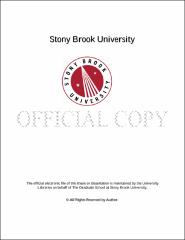| dc.identifier.uri | http://hdl.handle.net/11401/78310 | |
| dcterms.abstract | Monomethylmercury (MeHg) is a neurotoxic compound that causes adverse health effects in exposed wildlife and humans. It is primarily accumulated through diet and is the only mercury species to build up in aquatic food chains. However, our understanding with respect to MeHg biogeochemical cycling in marine environments and its interactions with marine organisms is still limited. In order to better understand important processes in the MeHg biogeochemical cycling and factors governing its environmental fate, uptake, accumulation, transformation, and trophic transfer of MeHg in the marine chains, I conducted a series of experiments and measurements associated with marine bacterioplankton, phytoplankton, zooplankton, and apex pelagic fish. The largest bioconcentration step of MeHg is found between water and primary producers like phytoplankton, implying that they serve as an important entry for MeHg entering the aquatic food web. Experiments using the gamma-emitting radiotracer Hg-203 to determine MeHg uptake rates and concentration factors in six marine phytoplankton species were performed. All algal species greatly concentrated MeHg out of seawater, with volume concentration factors (VCFs) ranging from 0.2x105 to 6.4x106, depending on algal species. VCFs were directly related to cellular surface area-to-volume ratios, suggesting that smaller algal cells can enrich MeHg to a greater extent than larger cells. Most of the cellular MeHg was found in the cytoplasm. Temperature, light, and nutrient additions did not directly affect MeHg uptake in most species, with the exception that the dinoflagellate Prorocentrum minimum displayed significantly greater uptake per cell at 18°C than at 4°C, suggesting an active uptake for this species. Passive transport seemed to be the major pathway for MeHg to initially associate with most phytoplankton and the size (surface area-to-volume ratio) of algal cells seemed to be the most critical factor affecting MeHg concentrations in phytoplankton cells. The influences of specific sulfur-containing organic compounds and naturally occurring dissolved organic matter (DOM) on the accumulation of MeHg in a marine diatom Thalassiosira pseudonana were investigated. At environmentally realistic and higher concentrations, the addition of glycine and methionine had no effect on algal MeHg uptake. Thiol-containing compounds such as cysteine and thioglycolic acid reduced MeHg accumulation in algal cells at elevated added concentrations (> 100 times higher than naturally occurring concentrations) reduced MeHg uptake by algae, however, environmentally realistic concentrations of glutathione, another thiol-containing compound (as low as 10 nM), resulted in a decline of ~30% in VCFs, suggesting its potential importance in natural waters. Humic acid additions of 0.1 and 0.5 mg C L –1 also reduced MeHg VCFs by ~15% and ~25%, respectively. The bioaccumulation of MeHg for T. pseudonana in coastal waters with varying levels of dissolved organic carbon (DOC) was inversely correlated with bulk DOC concentrations. Generally, naturally occurring DOM, particularly certain thiol-containing compounds, can reduce MeHg uptake by phytoplankton. MeHg is known to build up in marine food chains, resulting in higher concentrations in upper trophic level animals than their prey. To better understand MeHg bioaccumulation in marine food chains, the assimilation and retention of Hg(II) and MeHg in a marine calanoid copepod, Acartia tonsa were determined. Assimilation efficiencies of Hg(II) and MeHg ranged from 25% to 31% and 58% to 79%, respectively, depending on algal diets. Assimilation efficiencies were positively related to the fraction of Hg in the cytoplasm of the algal cells that comprised their diet. Efflux rates of Hg(II) (0.29 d–1) and MeHg (0.21 d–1) following aqueous uptake were similar, but efflux rates following dietary uptake were significantly lower for MeHg (0.11–0.22 d–1) than Hg(II) (0.47–0.66 d–1). The calculated trophic transfer factors in copepods were > 1 for MeHg and consistently low for Hg(II) (< 0.2). In general, MeHg uptake from the diet accounted for most of the body burden in copepods (> 50%). For an algal diet with a MeHg dry weight bioconcentration factor ≥ 106, over 90% of a copepod’s MeHg body burden can derive from the diet. The model-predicted MeHg concentrations in the copepods were comparable to independent measurements for copepods in coastal and open-ocean regions, implying that the measured parameters and model in this thesis are applicable to natural waters. The formation of Hg0 gas from Hg(II) and MeHg by coastal bacterial assemblages was studied in controlled laboratory experiments. A rapid radioassay method was developed to evaluate Hg0 production from seawater with added Hg concentrations in the low pM range. Hg 0 production rates were independent of dissolved Hg(II) and MeHg concentrations, and were directly a function of bacterial densities. (Abstract shortened by ProQuest.) | |
| dcterms.available | 2018-08-07 | |
| dcterms.contributor | Advisors: Fisher, Nicholas S.; Lopez, Glenn R.; Cochran, J. Kirk; Gobler, Christopher J.; Reinfelder, John R. | |
| dcterms.creator | Lee, Cheng-Shiuan | |
| dcterms.date | 2017 | |
| dcterms.dateAccepted | 2018-07-03T17:39:00Z | |
| dcterms.dateSubmitted | 2018-07-03T17:39:00Z | |
| dcterms.description | Department of Marine and Atmospheric Science | |
| dcterms.description | Dissertation | |
| dcterms.extent | 223 pages | |
| dcterms.format | application/pdf | |
| dcterms.identifier | Lee_grad.sunysb_0771E_13586.pdf | |
| dcterms.identifier | http://hdl.handle.net/11401/78310 | |
| dcterms.issued | 2017-12-01 | |
| dcterms.language | en | |
| dcterms.provenance | Submitted by Jason Torre (fjason.torre@stonybrook.edu) on 2018-07-03T17:39:00Z
No. of bitstreams: 1
Lee_grad.sunysb_0771E_13586.pdf: 7092343 bytes, checksum: 8767aca876094c79a56a9fde952f1984 (MD5) | |
| dcterms.provenance | Made available in DSpace on 2018-07-03T17:39:00Z (GMT). No. of bitstreams: 1
Lee_grad.sunysb_0771E_13586.pdf: 7092343 bytes, checksum: 8767aca876094c79a56a9fde952f1984 (MD5)
Previous issue date: 2017-12-01 | |
| dcterms.publisher | Stony Brook University | |
| dcterms.subject | algae, Chemical oceanography, Marine biology, bacteria, Biogeochemistry, dissolved organic matter, ocean, plankton, tuna | |
| dcterms.title | Methylmercury bioaccumulation, transformation, and trophic transfer in marine food chains | |
| dcterms.type | Text | |

